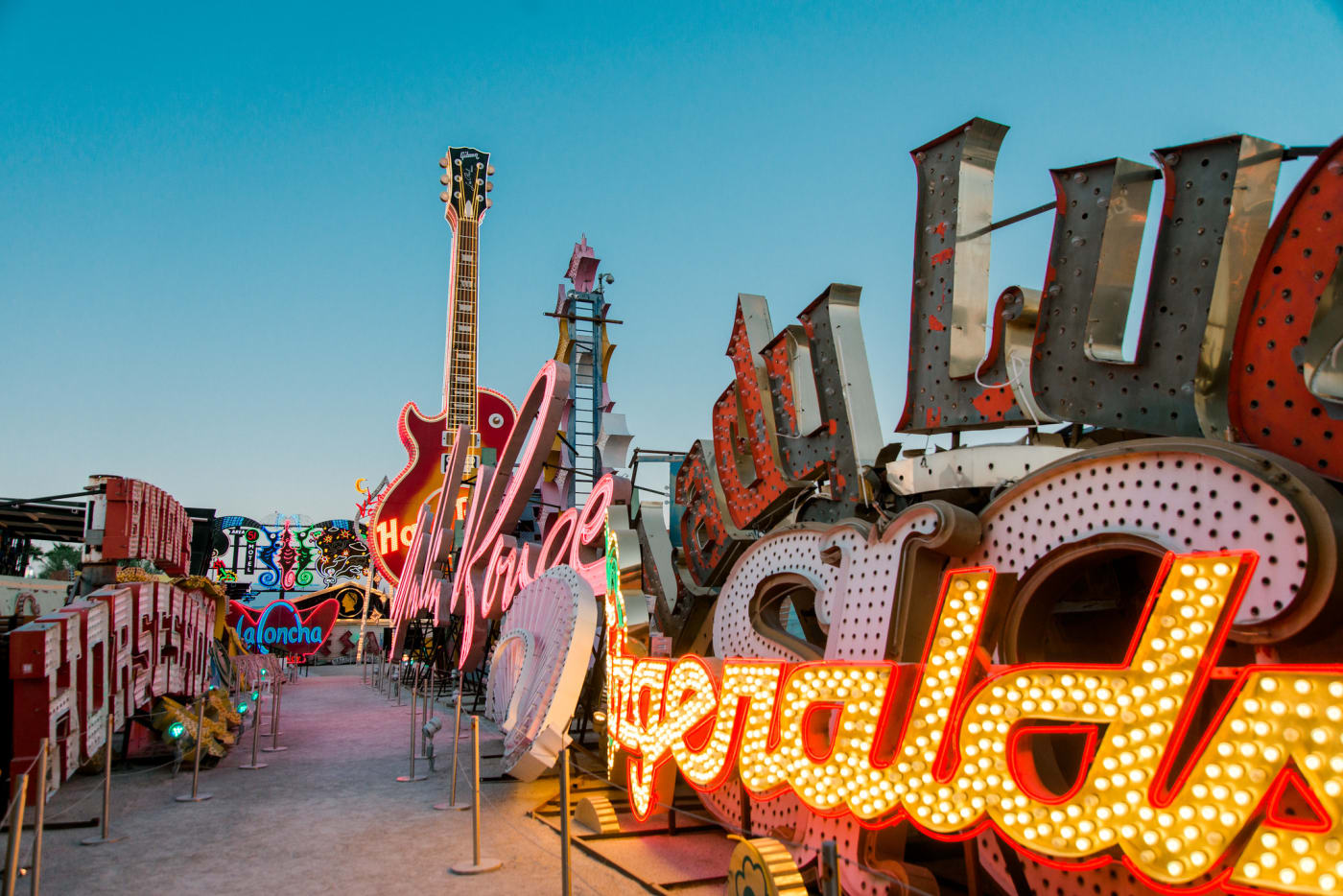From the glitz of Las Vegas to the hustle and bustle of Tokyo’s Shinjuku district, neon signs have become an iconic element of many cities. One very important question though. When were the first neon signs introduced and how has the technology evolved since then?
This Neon Museum blog delves into a brief history of neon signs from the first examples to some of the most modern applications. Read on to learn more about the exciting evolution of some of the most mesmerizing lights.
The First Neon Signs
French engineer Georges Claude is widely accepted to be the inventor of neon lighting. Inspired by Heinrich Geissler’s ‘Geissler tubes’, Georges Claude realized that passing electrical current through rarefied gas in a tube would create a neon glowing discharge which could have a striking visual effect. After this discovery, he first unveiled his invention at the Paris Motor Show in 1910. Claude would later patent his invention and start selling neon signs through his company Claude Neon Lights.
Following his patent, the first use of a neon sign is believed to have been by a Parisian hairdresser in 1912. The words ‘Palais Coiffeur’ were illuminated in neon above the shopfront and became a prominent feature along Boulevarde Montemartre, inspiring other business owners across Paris to order their own signs.
The Popularization Of Neon
The usage of neon lighting was mostly confined to Paris until the 1920s, after which it started to be used throughout the rest of France and the world, and neon signs wouldn’t be introduced to the US until the 1920s. Earle C Anthony is believed to be the first US business owner to use neon signage – in 1923, he ordered two signs reading ‘Packard’ to be used by two car dealerships in Los Angeles.Neon sign usage quickly caught on after this throughout the rest of the country.
In 1924, the first neon sign was installed in New York’s Times Square advertising automaker Willys-Overland. A Chinese restaurant called Orange Garden is meanwhile reported to have introduced the first neon sign to Chicago in 1926.
As for a history of neon in Las Vegas, the first signs are believed to have appeared between 1928 and 1930. Ethel Guenter, owner of the Overland Hotel, is believed to have installed the first neon sign in Las Vegas. This was followed by famous examples such as the Oasis Cafe sign in 1929 and the Las Vegas Club sign in 1930.
The Neon Sign Peak
By the mid-1930s, neon signs could be found across almost every major city in the world and had become a popular form of advertising. This popularity continued long into the 1950s.
During this time, neon lighting technology saw some big improvements, which helped to increase its popularity. The use of argon instead of neon and experimentation with different fluorescent tube coatings helped to enable a greater range of neon sign color options. As a result neon signs became more multicolored and detailed.
Some of the most iconic neon vintage signs in Las Vegas were installed throughout this period including the ‘El Cortez’ sign in 1941, the ‘Flamingo’ hotel sign in 1953, the ‘Welcome to Fabulous Las Vegas’ sign in 1959. The Neon Museum dedicates itself to the preservation and restoration of these vintage signs, which play a big part in the character of Las Vegas.
The Decline Of Neon Signage
Neon sign usage was in decline by the 1960s. At this point neon signs were no longer a novelty, and cheaper forms of illuminated signage were becoming more popular. Many neon signs up until this point were also made from glass containing lead. Health concerns over the use of lead in construction in the 1960s contributed to the decline of neon signage in favor of safer options.
The transition from neon to LED lighting not only revolutionized commercial lighting but also paved the way for environmentally sustainable and cost-effective illuminated signs, ensuring a bright and vibrant future for the world of signage.
The Neon Revival
During the 1980s, neon experienced a brief revival. TV series like Miami Vice helped to encourage this love for neon with many nightclubs, hotels and bars adopting neon once again as a symbol of luxury.
Neon fell out of favor again in the 1990s, however recently has been seeing a comeback. The biggest difference between vintage neon signs and modern neon signs is that most modern neon signs do not actually use neon – instead they simply use colored LEDs that help to simulate the colors produced by traditional neon and argon lighted signs. While still used in advertising, modern neon-style signs are more often used in an artistic manner. Many are used to create eye-catching images rather than text and are used within the interior of buildings as commonly as the exterior to help set a mood.
Here at The Neon Museum we marvel at the remarkable evolution of neon signs, which have transcended time to become cherished icons of our urban landscapes. From their vintage beginnings to the modern era where innovation has brought forth a new era of creativity, neon signs have left an indelible mark on our culture.
As we embrace the future, we eagerly anticipate the next chapter in the ever-evolving story of neon signs, where technology, artistry, and the spirit of innovation will continue to shape these luminous wonders.



